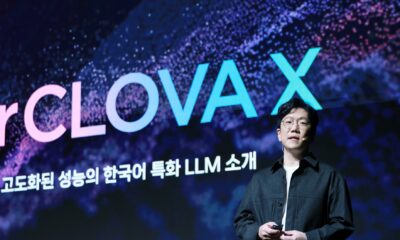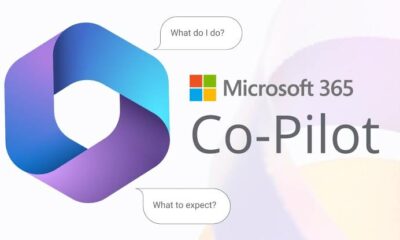
News
Google Generative AI: What It Is and How It Works

Generative AI is a branch of artificial intelligence that can create new content, such as text, images, videos, or audio, based on some input or data.
Unlike other types of AI that can only understand or recommend information,generative AI can also produce novel and realistic content that can be used for various purposes, such as entertainment, education, communication, design, and more.

Google is one of the leading companies in generative AI research and development. Google has been exploring and advancing generative AI technologies for years, and has launched several products and experiments that showcase the potential and impact of generative AI on various domains and industries.
In this article, we will explore what generative AI is and how it works, how Google is advancing generative AI research, how Google is bringing generative AI to developers and businesses, and how Google is creating new experiences with generative AI.

What is Generative AI?
Generative AI is a type of artificial intelligence that can generate new content based on some input or data. For example, given a prompt or a topic, generative AI can write a text; given an image or a sketch, generative AI can draw a picture; given a video or a sound clip, generative AI can create a video or an audio.
Generative AI can perform various tasks, such as:
– Text generation: writing natural language texts based on some input, such as keywords, sentences, paragraphs, or documents.
– Image generation: creating realistic images based on some input, such as pixels, sketches, captions, or styles.
– Video generation: producing realistic videos based on some input, such as frames, clips, sounds, or scripts.
– Audio generation: synthesizing realistic sounds based on some input, such as waveforms, frequencies, notes, or lyrics.
Some of the benefits of generative AI are:
– It can enhance creativity and imagination by providing new ideas and inspiration.
– It can improve productivity and efficiency by automating tedious and repetitive tasks.
– It can enrich communication and expression by enabling new forms and modes of interaction.
– It can expand knowledge and learning by generating new information and insights.
Some of the challenges of generative AI are:
– It can be difficult to control and evaluate the quality and diversity of the generated content.
– It can raise ethical and social issues related to the authenticity and ownership of the generated content.
– It can pose security and privacy risks related to the misuse and abuse of the generated content.
RELATED: 5 Free ChatGPT and Generative AI Courses to Level Up Your Skills
How to Use Generative AI for Your Content Marketing
The Future of Generative AI: 10 Trends to Watch in 2023
How Google is Advancing Generative AI Research
Google is one of the pioneers and leaders in generative AI research. Google has published hundreds of research papers and projects on various aspects of generative AI, such as models, methods, applications, evaluation metrics, datasets, etc.
One of the key technologies that Google is using for generative AI is *large language models* (LLMs), which are neural networks that are trained on large amounts of text data and learn to predict the next word in a sentence. For example, given the phrase “peanut butter and ___”, an LLM is more likely to predict “jelly” than “shoelace”. LLMs can not only generate natural language texts based on some input or prompt but also perform other natural language processing (NLP) tasks such as question answering (QA), summarization (SUM), translation (TR), etc.
Some of the famous LLMs that Google has developed or used are:
– BERT: Bidirectional Encoder Representations from Transformers. BERT is a pre-trained LLM that can be fine-tuned for various NLP tasks. BERT has achieved state-of-the-art results on many NLP benchmarks. BERT is also used as the backbone for many other LLMs developed by Google or other researchers.
– GPT-3: Generative Pre-trained Transformer 3. GPT-3 is one of the largest LLMs ever created with 175 billion parameters. GPT-3 was developed by OpenAI but was trained using Google Cloud’s TPU (Tensor Processing Unit) hardware. GPT-3 can generate natural language texts for various domains and purposes with minimal human guidance. GPT-3 is also considered to be one of the most powerful and versatile LLMs ever created.
Besides LLMs, Google is also developing novel techniques and methods for generative AI that can create new content in other modalities such as images (IMG), videos (VID), or audio (AUD). Some of these techniques and methods are:
– Transformer-XL: Transformer with Extra Long Positional Encoding. Transformer-XL is an extension of the Transformer model that can capture long-term dependencies and context in sequential data. Transformer-XL can improve the performance and quality of generative AI models for text, image, video, and audio generation.
– VQ-VAE: Vector Quantized Variational Autoencoder. VQ-VAE is a type of variational autoencoder (VAE) that can learn discrete latent representations of high-dimensional data. VQ-VAE can enable generative AI models to generate realistic and diverse images, videos, and audio with high resolution and fidelity.
– WaveNet: A Generative Model for Raw Audio. WaveNet is a generative model that can synthesize realistic speech and music from raw audio waveforms. WaveNet can produce natural sounding voices with various accents, languages, emotions, and styles. WaveNet is also used as the basis for Google’s text-to-speech (TTS) service.
How Google is Bringing Generative AI to Developers and Businesses
Google is not only advancing generative AI research but also bringing generative AI to developers and businesses through its cloud platform and services. Google Cloud offers various tools and solutions that enable developers and businesses to build and deploy generative AI applications quickly, efficiently, and responsibly.
Some of these tools and solutions are:
– Vertex AI: Vertex AI is Google Cloud’s unified platform for machine learning (ML) and AI. Vertex AI provides a suite of services and features that cover the entire ML lifecycle, from data ingestion and preparation to model training and deployment. Vertex AI also supports generative AI models and tasks, such as text, image, video, and audio generation.
– Generative AI Studio: Generative AI Studio is a web-based user interface (UI) that allows users to interact with, customize, and embed generative AI models into their applications. Generative AI Studio provides access to a collection of pre-trained generative AI models on Model Garden, a repository of ML models hosted on Google Cloud. Users can also tune the models’ parameters, test the models’ outputs, and download the models’ code using Generative AI Studio.
– Model Garden: Model Garden is a repository of ML models hosted on Google Cloud. Model Garden contains a variety of ML models for various tasks and domains, such as NLP, computer vision (CV), natural sciences (NS), etc. Model Garden also includes generative AI models for text, image, video, and audio generation. Users can access the models on Model Garden via Generative AI Studio or directly in a data science notebook.
– Duet AI: Duet AI is a set of APIs that enable users to integrate generative AI capabilities into their applications. Duet AI provides APIs for text generation (TG), image generation (IG), video generation (VG), and audio generation (AG). Users can use Duet AI APIs to create new content or enhance existing content with generative AI.
Google Cloud’s generative AI tools and solutions have been used by many customers across various industries and sectors, such as media, entertainment, education, healthcare, finance, etc. Some of the use cases and testimonials from Google Cloud’s generative AI customers are:
– Replit: Replit is an online coding platform that allows users to create and run code in any programming language. Replit uses Google Cloud’s generative AI tools to power its Code Intelligence feature, which provides users with code suggestions, completions, corrections, etc. Replit also uses Google Cloud’s generative AI tools to power its Code Jam feature, which allows users to create apps with the sound of their voice.
– Wendy’s: Wendy’s is a fast-food restaurant chain that operates in more than 6,000 locations worldwide. Wendy’s uses Google Cloud’s generative AI tools to transform its restaurant experience by creating personalized menus, offers, and recommendations for its customers based on their preferences, behavior, location, etc.
– Orange: Orange is a multinational telecommunications company that provides mobile, internet, TV, and cloud services to more than 260 million customers worldwide. Orange uses Google Cloud’s generative AI tools to create new digital services and products for its customers based on their needs, interests, feedbacks
Conclusion
Generative AI is a powerful and promising technology that can create new content in various modalities, such as text, image, video, and audio. Google is one of the leading companies in generative AI research and development, and has launched several products and experiments that showcase the potential and impact of generative AI on various domains and industries.
Google is also bringing generative AI to developers and businesses through its cloud platform and services, such as Vertex AI, Generative AI Studio, Model Garden, and Duet AI.
Generative AI can enhance creativity and imagination, improve productivity and efficiency, enrich communication and expression, and expand knowledge and learning. If you want to learn more or try out Google’s generatve AI products, you can visit their websites or join their waitlists.





























